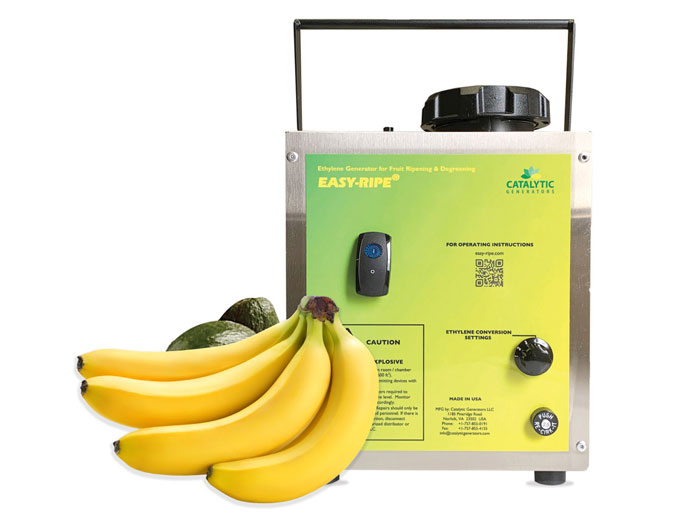The Importance of Postharvest Ripening and Testing of Fresh Produce
April 20, 2023 | 3 min to read

NORFOLK, VIRGINA – Postharvest handling of some fruits involves additional steps that are critical to their success at retail. Ripening with ethylene ensures that several of these commodities are at their ideal ripeness and will properly reach a dependable, ready-to-eat stage at the right time. Ethylene is a natural plant hormone that various fruits release as they enter their climacteric stage, the period when fruit respiration increases and starches convert to sugars.
Having quality ripening rooms is critical to having a successful ripening process, says Gary Campisi, President of Campisi Produce Consulting, LLC. He emphasizes that ripening rooms are only one of several critical elements, though, and discusses each of these.
“The first of those elements is ensuring you have a vendor that delivers high-quality ethylene service…quality in their ethylene generators, ethylene concentrate and customer support,” says Campisi. A minimum of 100 parts per million (ppm) is generally recommended for most fruits, and the ethylene equipment should be able to produce and maintain the correct level throughout the ethylene application period.
Campisi says that he’s often asked which ethylene vendor he recommends. “Ethylene vendors need to deliver consistent quality ethylene at a competitive price and in a timely manner. Their generators need to be reliable, so that the ripener has a high level of confidence. I’ve used Catalytic Generators my entire career; I started working with them in the 1980’s and found that they are easy to use, reliable, and deliver a consistent amount of ethylene concentration that can be refined for each commodity.”
Ethylene, while valuable in ripening, can be very dangerous in that it is explosive. This risk is eliminated when using the ethylene generators from Catalytic. Campisi leans on his experience and stresses that “when considering the use of pure ethylene that is delivered via compressed tanks, you must be very careful because you are dealing with ethylene in large amounts, which is a highly explosive product and in a pressurized tank. Ethylene produced in modern ethylene generators does not concern me. It’s safe, and the application is easy to execute.”
The next critical element to the ripening process is making sure you have quality fruit to ripen. Campisi says that knowing the fruit maturity and overall quality are extremely important before initiating the ripening process with ethylene. “Having this knowledge, the ripener can determine the proper cycle, temperatures, and ethylene necessary for a given commodity.” He also adds that there are times when a particular fruit is at a maturity level that does not require ethylene treatment. Understanding the maturity of fruit, along with seasonality, will help the ripener determine when to initiate the ripening process with ethylene and at what temperature.
Campisi recommends the right tools for this. “The appropriate instrument for determining the maturity of avocados, mangos, and pears is a penetrometer. For bananas, a sharp knife and visual acuity are important. Of course, an accurate and calibrated pulp thermometer is critical for managing the ripening process for all these fruits.” Why is calibration so important? “Consistency,” according to Campisi, is the expectation for all great ripening programs. “Utilizing calibrated tools is an important factor in achieving the consistency necessary for a successful ripening program.”
The sister company of Catalytic is QA Supplies, who carries a complete line of these and other quality management tools, plus offers calibration services.
The final critical element is scheduling– the creation of a ripening plan to ensure that the precise amount of fruit, at the proper ripeness, is achieved daily for each customer. While the previous step of knowing fruit maturity and quality is important to the schedule, as these will dictate ripening speed, it is also key to know historical demand to plan the right amount of fruit to have ready to ship.
Dependable and consistent, high-quality, ready-to-eat fruit at retail is vital to boosting sales. This all starts with the correct postharvest handling steps.
